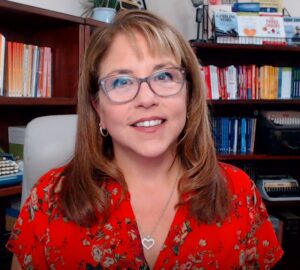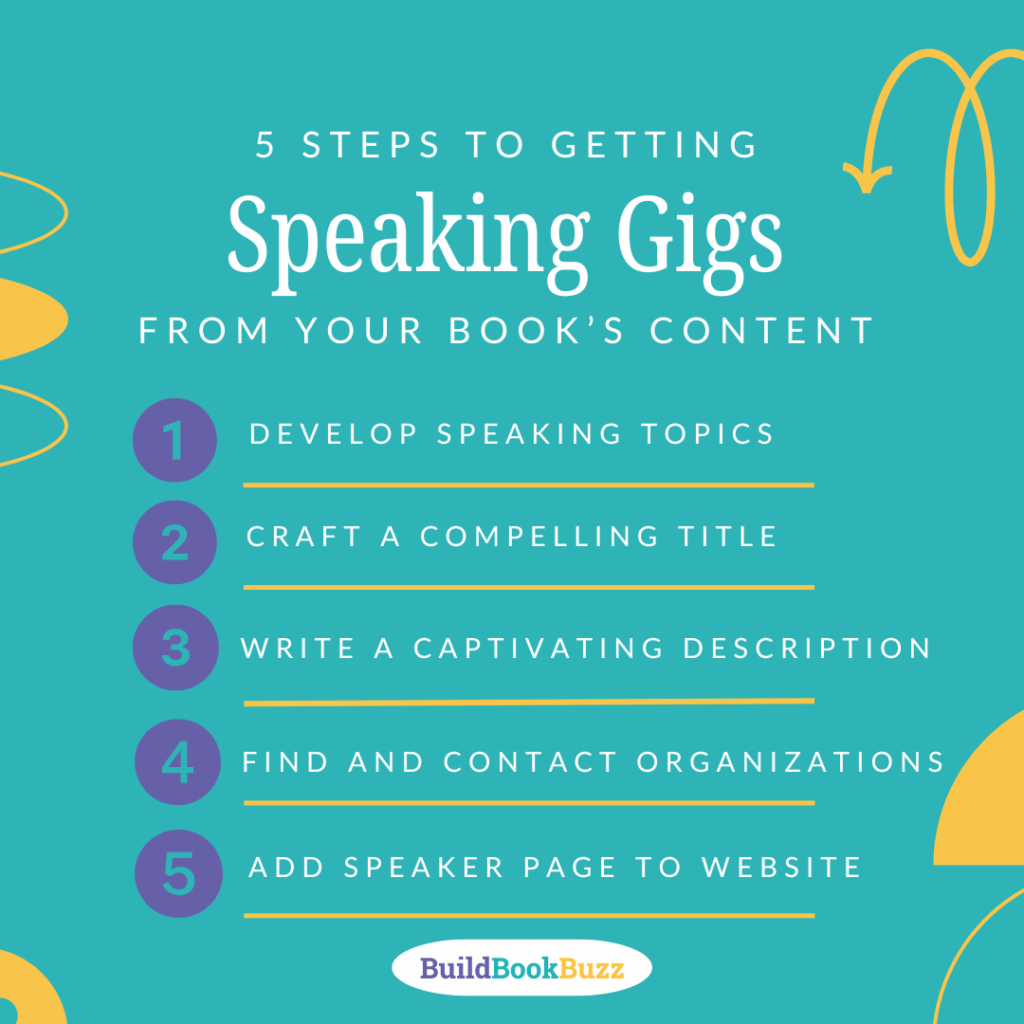Step into the spotlight: How to transform your book into speaking opportunities
Want to sell more books and connect with your audience in person? Here are 5 steps for transforming your book into speaking opportunities.

I became a fan of Stephanie Chandler after reading one of her early books, From Entrepreneur to Infopreneur, published nearly 20 years ago. Later, as our paths continually crossed, we became good friends and sometimes collaborators, most recently as workshop co-presenters at the American Society of Journalists and Authors national conference in New York City.
Stephanie is the author of several other books, including The Nonfiction Book Marketing and Launch Plan and The Nonfiction Book Publishing Plan. She is CEO of the Nonfiction Authors Association, a vibrant community for writers, and the Nonfiction Writers Conference, an annual event conducted entirely online since 2010. A frequent speaker at business events and on the radio, she has been featured in Entrepreneur, BusinessWeek, The Writer, Writer’s Digest, and Wired magazine.
Step into the spotlight: How to transform your book into speaking opportunities
By Stephanie Chandler
Speaking to groups of all sizes can be a powerful way to sell books.
When you captivate an audience, many will want to take a piece of that goodness home with them. An autographed copy of your book is the perfect token to remember the occasion and learn more about you.
Luckily, there are also endless opportunities to conduct speaking engagements in your own backyard.
Venues include service groups like Rotary and Kiwanis, trade association meetings, schools, retirement communities, libraries, churches, chambers of commerce, and groups hosted on Meetup.com.
5 steps that will transform your book into speaking opportunities
Public speaking on a topic related to your book will not only help sell more books, but it will also help you develop meaningful, important connections with your readers.
It might even give you ideas for your next book.
With that in mind, here are my five steps for transforming your book into speaking opportunities.
Step 1: Develop speaking topics
Before you start asking groups about speaking opportunities, you need to develop topics that appeal to the host’s target audience.
Speaking engagements aren’t about your book; they are about delivering value to the audience, which typically means teaching them something.
For fiction writers, essayists, and narrative nonfiction that doesn’t have an obvious how-to element, you need to get creative and find themes from your books that can become interesting speaking topics. The following are some examples:
- For a memoir about getting through a divorce, speaking topics could cover how to create your next act in life, how to use journaling as a healing tool, or single parenting advice.
- For a novel set in San Francisco, speaking topics could be about hidden places to enjoy family fun in the area, little-known local historical facts, or day trips within a 90-mile radius.
- For a humorous essay collection with a target audience of college students, speaking topics could include job hunting after college, financial management skills, or tips for living life as a functioning adult. Though these topics are only indirectly related to the book, they appeal to the challenges and interests of the target audience. And when you engage an audience with valuable content, they will want to learn more about your book and take a copy home with them.
- For prescriptive nonfiction, the topics are often already in your book. Look to your chapters to extract interesting how-to topics. And don’t worry about giving away your best advice. This leads the audience to want your book even more so they can reinforce what they have learned and expand their knowledge.
- For a romance novel, you could speak about how to bring more romance to relationships, online dating tips and strategies, or share scientific facts about how to create lasting companionship.
Remember that the goal is to educate and entertain the audience, not blatantly promote your book.
Your topics should deliver value, based on content related to your book in some way.
Self-promotion happens automatically through your bio that is shared with the audience before your engagement, by mentioning your book during the presentation, and by offering to sign copies after the event.
Step 2: Craft a compelling title for each presentation
When you’re starting as a speaker, I recommend creating three initial speaking topics.
This gives you some alternative choices to provide to organizations. It will also improve your chances of getting selected as a speaker because if topic number one doesn’t resonate, topic number two or three might be the perfect fit.
Once you know your topics, write titles that captivate and offer a promise to the audience. This means that the title indicates how the lives of attendees will be improved in some way.
For example, for the author of the book about helping high school students launch to college and beyond, the following could be potential titles.
- “Create a College Success Plan – Even if You Don’t Know What You Want to Be When You Grow Up!”
- “Career Options for Kids Heading into Adulthood: How to Find Your Path When You Have No Idea Where to Begin”
- “What Nobody Tells You About Adulthood: How to Successfully Navigate Adult Life and Avoid Common Mistakes”

Step 3: Write a captivating description
Following a promise-driven title, write a description that your speaking host can copy and paste into their event invitation. This is how most organizations promote presentations—they use the session description provided by the speaker.
A good session description should be around 150 words and include at least three takeaways for the audience. Here’s an example:
Career Options for Kids Heading into Adulthood: How to Find Your Path When You Have No Idea Where to Begin
Graduating high school can be daunting, especially if you are among the 75% of students who don’t yet know what career options you want to pursue. In this enlightening (and sometimes funny) presentation, you will learn how to:
- Identify your interests and talents so you can uncover potential career ideas.
- Understand options for post-high school education (two-year and four-year schools, advanced degrees, trade schools, and military) and how to decide which path aligns best with your goals.
- Research career options based on the tools you gained during this session.
Students find more success in adulthood when they clarify their interests, set goals, and craft a plan to succeed. This powerful session will set you up for a successful future and a life that you enjoy!
#Authors, discover Stephanie Chandler’s 5 steps to turning your book into speaking opportunities that bring visibility and book sales!Click to tweetStep 4: Find and contact organizations
There are many speaking opportunities available, and one of the easiest places to get started is with local service groups like Rotary and Kiwanis. Many of these nonprofits host weekly meetings and welcome speakers on a variety of topics.
To find contact information, search for the organization’s website. Depending on the group’s size, you might find a general contact address, information on board members, or even a staff directory you can send your speaker pitch to.
Next, look for trade associations that reach your target audience and host meetings near you. Search Google for “association <large city near you>” and “nonprofit <large city near you>”. You can also search on the Directory of Associations site and the IRS list of charities and organizations.
Once you locate an association that aligns with your audience, check the website for upcoming events and look for a link to submit a speaker application. If you can’t find a link, locate a list of local board members and send your pitch to one or more of them.
Step 5: Add a speaker page to your website
Once you have your topics identified and written, add a speaker page to your website.
List your topics with a short description.
Be sure to add testimonials when you receive them, too.
You could soon be speaking to groups of all sizes and greatly increasing your book sales each month.
Ready to add “public speaking” to your book marketing plan? Download the free Build Book Buzz Book Marketing Plan Template and instructions here!
Do you have public speaking experience? What’s your best tip for securing speaking gigs?
Like what you’re reading? Get it delivered to your inbox every week by subscribing to the free Build Book Buzz newsletter. You’ll also get my free “Top 5 Free Book Promotion Resources” cheat sheet immediately!


Thank you for this informative and comprehensive article. What are your thoughts on speaker bureaus? Are they worth it?
I’m so glad you find Stephanie’s article helpful, Sonia.
Speakers bureaus don’t work for speakers — they aren’t speaker agents. They work for organizations seeking speakers. So, they aren’t out there looking for gigs for you — they’re looking for speakers who match an organization client’s requirements in the same way that executive recruiters match jobs to people. That said, yes, if one wants to include you in its database and recommend you to orgs, they are well worth the commission they take from your speaking fee. Chances are, they’re bringing you an engagement you wouldn’t otherwise have. They generally only work with speakers who are already earning speaking fees at a certain level or have the kind of sudden celebrity that can generate high fees. If you’re not a celebrity, you need to be earning tens of thousands of dollars per gig already to prove your worth.
Sandy
Excellent and informative tips. Thank you.
You’re welcome, Susan. I’m glad Stephanie’s advice is helpful.
Sandy